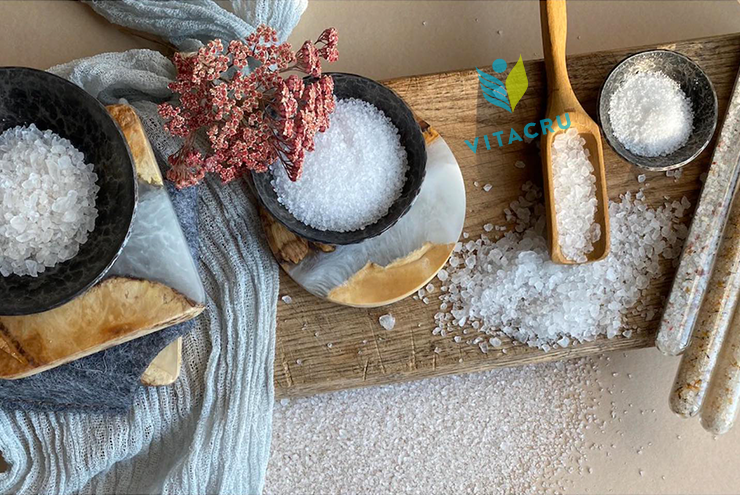Salt, good or bad?
The medical community, along with popular culture, has long accepted two very common ideas and Dr. David Brownstein, author of "Salt Your Way to Health" is intent on refuting both.
The first: A low-salt diet is healthy.
The second: The refined salt in our saltshakers is healthy.
Studying medical literature, he found very little data supporting the efficiency of low-salt diets and none examined diets that included unrefined salt. According to Dr. Brownstein, conventional wisdom about salt is faulty because research has only been conducted with the wrong kind of salt.
What we now call salt is a substance whose molecular composition has been heavily modified, going through a process where the salt is chemically treated to remove minerals and bleached for cleaner air?? Moisture is then removed to ensure longer shelf life before finding its way to consumers. Up to 2% of refined salt may contain preservatives, including the potentially dangerous sodium ferrocyanide, ammonium citrate, and aluminum citrate.
Dr. Brownstein states that his clinical experience has shown that unrefined salt can not only help lower cholesterol but also help with fatigue, headaches, and blood pressure. It can also regulate the function of the immune system and the adrenals. Conversely, low-salt diets increase insulin levels, which are associated with diabetes, polycystic ovaries, and obesity. He also adds that a low-salt diet can lead to a buildup of toxins.
Unrefined salt contains many precious trace elements and minerals that our body needs in small quantities. Mineral deficiency is associated with low pH, which in turn is often associated with health problems such as low kidney, liver, and brain function; disruption of enzyme activity; poor immune function; hormonal imbalances; and a host of chronic degenerative diseases.
The 3 most popular types of unrefined salt are:
Redmond Salt: 60+ trace elements, extracted from an ancient seabed in Redmond, Utah (the mine is protected against pollutants and erosion by a layer of bentonite clay). The salt is mined and packaged by a single company.
Celtic sea salt: 60+ trace elements, harvested from seawater, dried by the wind and the sun in clay basins off the coast of France (method iinvented by the Celts). The salt is harvested and packaged by a single company.
Himalayan salt: is often sold listing 84 trace minerals (the additional 24 trace minerals in Himalayan salt are less than 0.00001%. This is a known marketing gimmick: when a lab reports finding <0, 00001%, it does not mean that a tiny amount was found, it only means that "none was found in this sample"). It is extracted from an ancient seabed south of the Himalayan Mountains, more precisely in the Khewra mine in Pakistan. Extracted locally, but shipped to many distributors, making quality control more difficult - make sure to read labels to check for product additions or transformation.
The quantities vary according to your weight, from 1 to 2 teaspoons per day. What is most important is that good unrefined salt is consumed. Through your own research, find the best salt for you based on your body and your priorities.
To your health ❤
The Vitacru team
Good to know: It is important to have a medical follow-up and to make a diagnosis of these disorders before initiating any conventional and/or natural therapeutic treatment.
References:
1. https://oryxdesertsalt.com/wp-content/uploads/2021/07/Salt-your-way-to-health.pdf2. https://youtu.be/teKuc78JwCM
3. https://www.amazon.ca/Salt-Your-Way-To-Health/dp/B000R8ZTGK
4. https://youtu.be/TPKENjJAuvE
5. https://empoweredsustenance.com/unrefined-salt-brands-compare/


